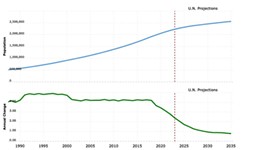Back to the Chalkboard?
By Mike Clark-Madison, Fri., May 17, 2002

Though tensions between City Hall and Austin ISD have cooled a bit since last year, when Mayor Gus Garcia made the district's problems the major focus of his mayoral campaign, the battle is far from over. Despite AISD Superintendent Pat Forgione's recent Blueprint effort to address Austin's problems educating children of color, the Mayor's Committee on K-12 Educational Excellence -- whose draft report was released last week -- is not satisfied.
Effectively, the K-12 Committee's report puts City Hall's stamp on a platform already advanced by AISD's numerous citizen critics, particularly Rev. Dr. Sterling Lands II and his Eastside Social Action Coalition. Created in January, the committee originally was supposed to make recommendations to AISD based on three objectives: raising academic achievement for all students, closing the gap between Anglo and non-Anglo students, and bridging differences between cultures and learning styles. But the draft report says next to nothing about across-the-board academic performance, and it includes lengthy lists of recommendations in two areas -- parent communication and student discipline -- absent from its original charge, but important to ESAC and other AISD critics.
(Lands and his frequent ally Stella Roland both sit on the K-12 committee, as do former City Council candidate and current ACC trustee Rafael Quintanilla [the committee's chair], education advocate Olga Cuellar, Austin Chinese School director Linwen Ann Lee, Sanchez Elementary teacher Tamara Smith, and Gullett Elementary principal Sandy Leibick.)
What the report does say about "closing the gap" -- the issue that right now overwhelms all others -- is not at all flattering to AISD, and in both specifics and tone/attitude reads like any number of Lands' sermons, speeches, and writings on the topic. Though some proposals are, in fact, action items -- like adding $5,000 to $10,000 to the salaries of teachers in low-performing schools -- its recommendations tend toward the unspecific and polemical: "Help families and children envision a better future," or "Create a safe environment for teaching and learning."
Lands -- er, the K-12 committee -- acknowledges AISD's own efforts in backhanded fashion: "According to the superintendent, AISD has recently taken major steps in the directions outlined. Even though these steps could have been taken two years ago, we applaud the direction." The report then goes on to outline the numerous ways in which the Blueprint initiative is insufficient: "We are concerned that his plan only includes six schools and therefore does not address the vastness of the problem," the report reads. "We are concerned that the teachers and administrators affected were not part of the initial planning. We are concerned that many schools will continue to flounder as we wait to see the results. We are concerned that, without constant prodding from community groups, this newfound mission will lose steam and only survive as an asterisk in another unnecessary doctoral thesis."
Other sections of the report are much more specific than the "closing the gap" findings, but likewise urge AISD to implement a far more extensive -- and expensive -- program to address various community grievances.
Now, many would argue that AISD deserves every bit of the abuse lumped on it in the K-12 committee's report, and that turning the ESAC platform into de facto city policy is what needs to happen to push the district in the right direction. Garcia's office is happy with the committee's work so far. "The mayor strongly feels that decisions being made at AISD have an impact on the city," says Paul Saldaña, Garcia's executive assistant. "We fund $1.5 million a year in joint and after-school programs, and AISD assesses the highest property tax on city residents, and the kids who aren't at school when they should be are at existing city facilities -- they're wreaking havoc in the park system, then they're picked up for violations and become part of the court system, and they end up in the city's lap and in the mayor's lap."
But since the K-12 committee isn't telling Forgione and the AISD board much that they haven't heard before, how can the report help? "It's important that the committee prioritize [its recommendations]," Saldaña notes. "Some have fiscal implications -- if we're going to give them this advice, it would be helpful to prioritize. And some have already been implemented or are about to be implemented at the school district." The committee held a public hearing on the draft report Monday night and is set to meet May 20 to finalize its recommendations; the report will be presented to the City Council and the AISD board at the end of the month.
Will anyone be listening at AISD headquarters? "Based on preliminary discussions with board members [in particular, John Fitzpatrick and Rudy Montoya], they're eager to receive the recommendations," Saldaña says. "They're willing to hear the information." He adds that Garcia wants the committee to present its report to the AISD board in a work session, not "with them up on the dais and the committee down below. We want to commit to working together."
Got something to say on the subject? Send a letter to the editor.








